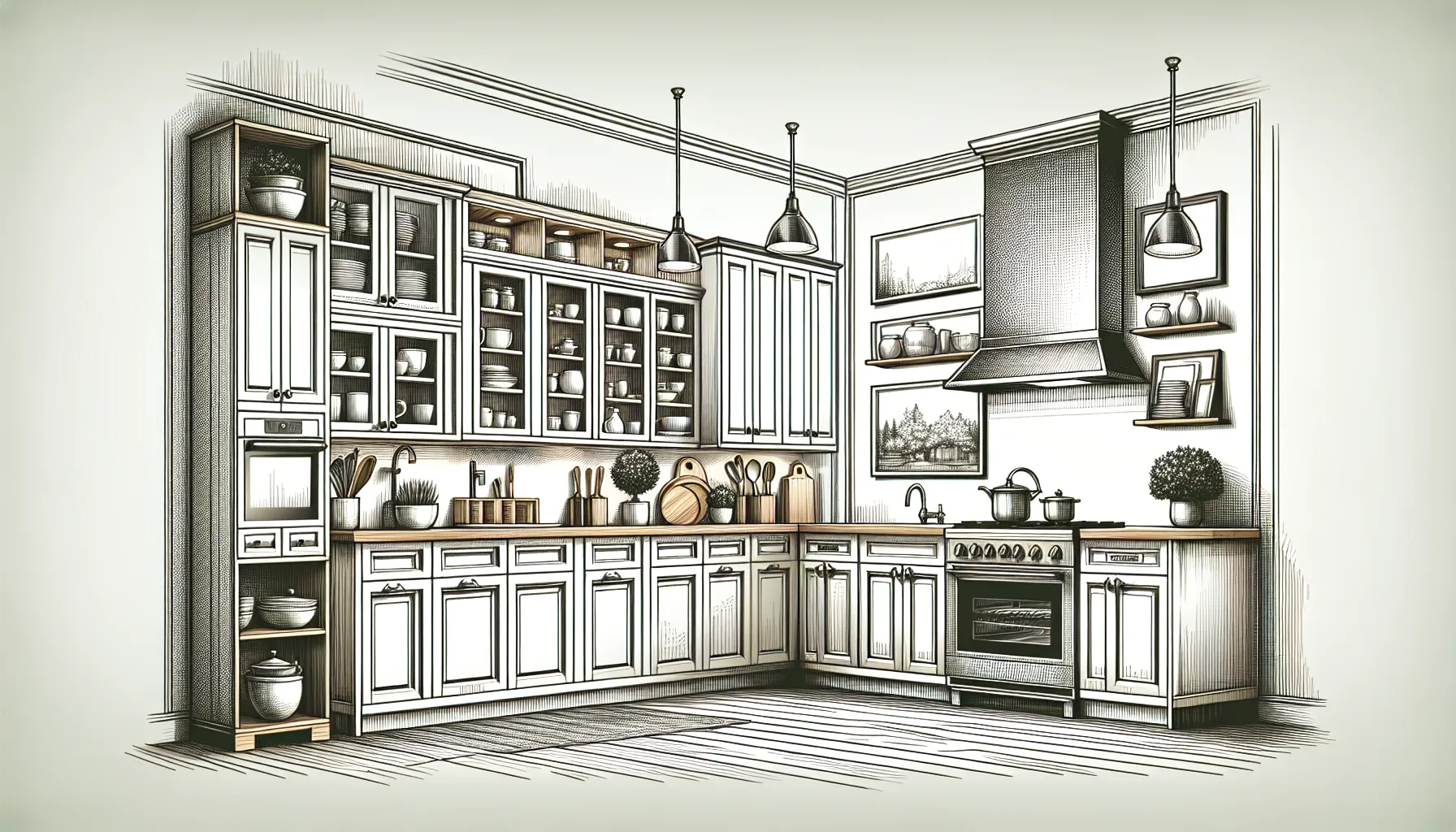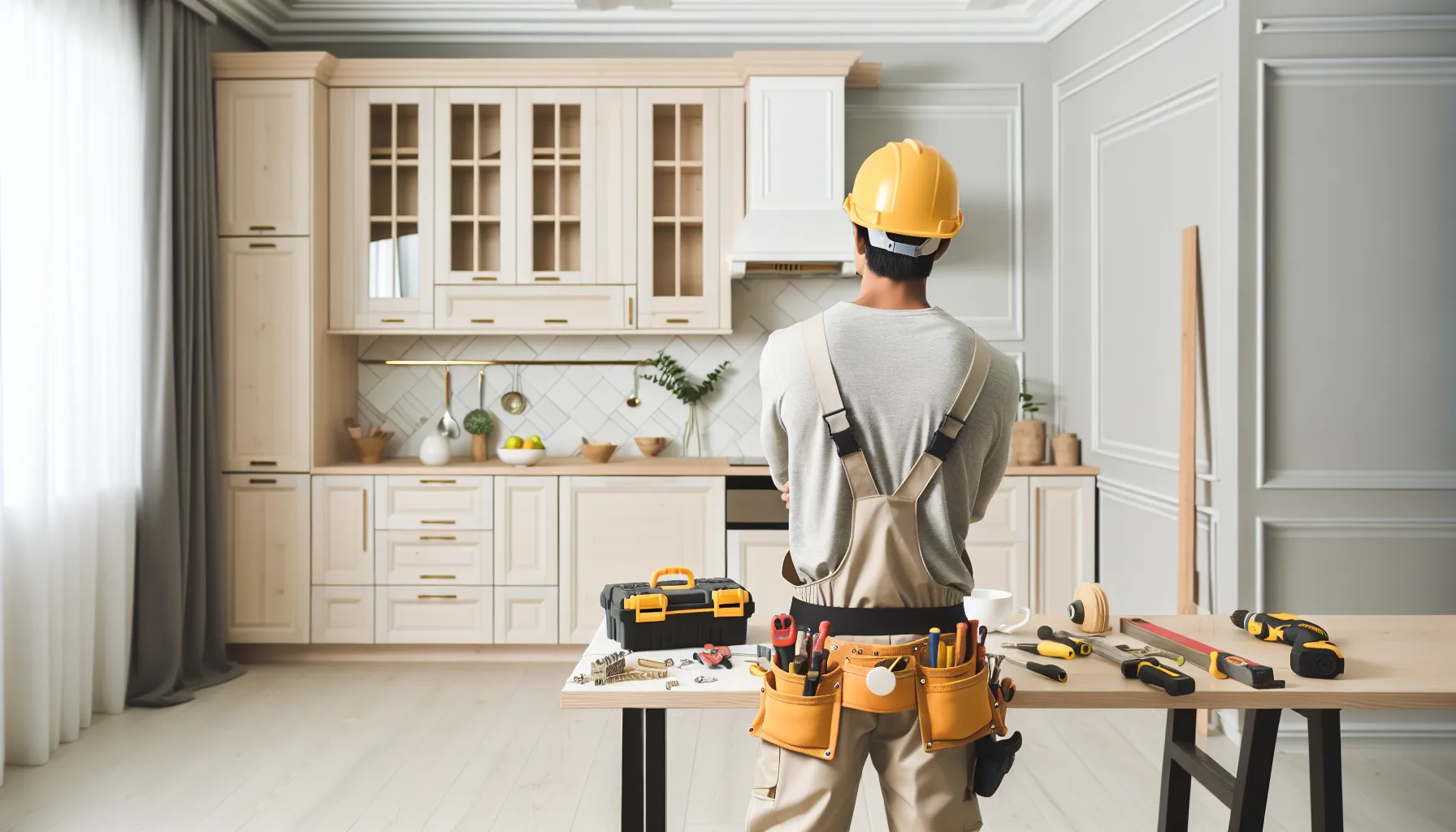Key Takeaways
- Cost Range Overview: Kitchen cabinet installation costs in 2025 typically range from $4,000 to $12,000, depending on cabinet type and additional features.
- Material Impact: The choice between stock, semi-custom, and custom cabinets significantly affects overall costs—with stock cabinets being the most budget-friendly and custom options commanding higher prices.
- Labor Costs: Professional installation labor can range from $1,000 to $3,000, influenced by complexity and regional market rates; DIY efforts may offer savings but require skill and time.
- Additional Expenses: Be prepared for extra costs, such as countertops and hardware, which can add 20% to 30% to the total project budget.
- Timing Strategies: Planning installations during off-peak seasons can lead to reduced labor rates and overall savings, so consider scheduling accordingly.
- Customization vs. Budget: Striking a balance between desired customization and budget constraints is crucial for an effective kitchen remodel, helping achieve both aesthetics and functionality without overspending.
When it comes to transforming our kitchens, cabinet installation stands out as a key element that can enhance both functionality and aesthetics. As we look ahead to 2025, understanding the costs associated with this essential home improvement can help us make informed decisions. Whether we’re planning a full remodel or a simple upgrade, knowing what to expect financially is crucial.
In this guide, we’ll break down the factors influencing kitchen cabinet installation costs, from materials to labor. We’ll also explore how trends and innovations in 2025 might impact our choices and budgets. By staying informed, we can navigate the process with confidence and ensure our dream kitchens become a reality without breaking the bank.
Overview of Kitchen Cabinet Installation Costs
Understanding the costs of kitchen cabinet installation is vital for making informed decisions. Several variables influence these expenses, including materials, labor, and desired customizations. In this section, we explore the key factors that shape these costs and provide typical price ranges observed in 2025.
Factors Influencing Cost
Various elements affect kitchen cabinet installation costs, from material choice to labor expenses. Quality materials, such as solid wood or high-grade plywood, often incur higher costs compared to particleboard or laminate options. Custom cabinetry also raises expenses, given the precise measurements and artisanal craftsmanship involved. Labor costs vary widely based on geographic location and the complexity of the installation. Regions with higher living costs generally reflect increased labor rates. Additional features, such as soft-close hinges or intricate moldings, further impact pricing. Understanding these factors allows us to set a realistic budget and prioritize essential upgrades.
Typical Price Ranges
In 2025, kitchen cabinet installation costs typically range between $4,000 and $12,000 for an average-sized kitchen. This range includes both materials and labor. Basic stock cabinets start around $4,000, while semi-custom options can elevate costs to about $8,000. For those opting for high-end custom cabinets, prices may soar to $12,000 or more, depending on design and finishes. It’s important to factor in additional expenses, such as countertop installation and hardware, which can add 20% to 30% to the overall project cost. By being aware of these typical price points, we can better prepare for our kitchen renovations and make choices that align with our budgets and needs.
Types of Kitchen Cabinets

Understanding the different types of kitchen cabinets helps in making informed decisions for our remodeling projects. The choice affects both functionality and overall aesthetics of the kitchen space.
Custom Cabinets
Custom cabinets represent the pinnacle of personalized kitchen design. These cabinets are tailored specifically to our needs, preferences, and kitchen dimensions. They offer endless options for materials, finishes, and layouts. With the ability to incorporate unique features like pull-out shelves or specialized storage solutions, custom cabinets elevate both usability and visual appeal. However, they come with a higher price tag, typically ranging from $15,000 to $30,000, depending on the complexity and materials chosen. Their investment often pays off through an increase in home value, providing a bespoke solution that stock or semi-custom options cannot match.
Semi-Custom Cabinets
Semi-custom cabinets bridge the gap between stock and custom options. They allow for some degree of personalization, such as selecting finishes, sizes, and configuration tweaks, without the full expense of custom cabinetry. These cabinets typically come from manufacturers that offer a range of styles and features, giving us the flexibility to design within a budget. Costs usually range from $8,000 to $15,000, making them a viable alternative for homeowners seeking quality without complete customization. This balance provides a well-rounded solution that can enhance both kitchen aesthetics and functionality effectively.
Stock Cabinets
Stock cabinets are the most affordable and readily available option. Typically found at home improvement stores, they come in standard sizes with limited finishes and styles. While they may lack customization, stock cabinets suit straightforward kitchen designs or budget-conscious remodels. Prices generally fall between $4,000 and $8,000, inclusive of installation. Their quick availability makes them an excellent choice for urgent renovations or updates. However, we should consider limitations in fit and functionality compared to more tailored options, ensuring our final choice aligns with long-term kitchen goals.
Cost Breakdown

Understanding the costs associated with kitchen cabinet installation in 2025 helps us make well-informed decisions. We’ll break down the primary components that contribute to the overall expenses.
Labor Costs
Labor costs play a significant role in the overall budget for kitchen cabinet installation. Depending on complexity and local market rates, installation fees typically range from $50 to $150 per hour. For a standard kitchen, hiring a professional can result in total labor costs between $1,000 and $3,000, reflecting both the expertise involved and time requirements. In urban areas, rates may trend higher due to demand. Always verify credentials and experience before hiring contractors to ensure quality work while potentially avoiding costly mistakes.
Material Costs
Material costs directly influence the quality and appearance of kitchen cabinets. Stock cabinets are the most affordable, costing between $4,000 and $8,000 for an average kitchen. Semi-custom options provide more design flexibility, with prices ranging from $8,000 to $15,000. High-end custom cabinets are the priciest, often between $15,000 and $30,000, reflecting personalized designs and premium materials. Selecting materials like wood or laminate can further impact total costs, making it essential to prioritize our preferences and budget in the decision-making process.
Additional Expenses
In addition to primary costs, we must account for additional expenses that can arise during installation. Countertop installation typically adds 20% to 30% to our overall budget, depending on the material selected. Cabinet hardware, including knobs and pulls, may also incur costs of $100 to $500. Additionally, other considerations such as electrical or plumbing modifications can arise, especially in older homes, further impacting our total expenses. Understanding these potential costs beforehand equips us to budget more effectively and avoid unexpected financial surprises.
DIY vs. Professional Installation
When considering kitchen cabinet installation, we often weigh the options between DIY projects and hiring professionals. Each approach presents unique advantages and challenges that influence our decision-making process.
Pros and Cons of DIY
Engaging in DIY installation can offer significant savings. We save labor costs and gain a sense of accomplishment. For example, a straightforward installation of stock cabinets costs around $4,000, and doing it ourselves can eliminate up to $3,000 in labor fees. However, DIY projects require a solid understanding of carpentry and design principles. We face risks, such as miscalculating measurements or not achieving a professional finish, which can lead to increased costs if we need repairs or adjustments. We must also invest time, which can be considerable, especially for complex installations. While DIY provides flexibility, evaluating our skills and confidence level becomes crucial for success.
When to Hire a Professional
Opting for professional installation often guarantees high-quality results. Professionals bring expertise and experience, minimizing risks associated with errors that could be costly. For instance, custom cabinet installations often range from $15,000 to $30,000, and skilled installers can ensure precise measurements and proper alignment. We should consider hiring professionals when dealing with complicated layouts, older homes with irregular structures, or specific design visions that require advanced techniques. Additionally, professionals streamline the process, saving us time and effort. If we prioritize a flawless finish and want peace of mind about the project, hiring a professional installer emerges as a sensible choice.
Tips for Reducing Installation Costs
Reducing kitchen cabinet installation costs involves strategic planning and informed choices. We can implement several effective strategies to achieve budget-friendly results.
Choosing the Right Cabinets
Selecting the appropriate cabinets significantly influences overall costs. Stock cabinets offer an affordable option, ranging from $4,000 to $8,000, and suit straightforward designs. Semi-custom cabinets, priced from $8,000 to $15,000, provide a balance between personalization and affordability, catering to various tastes without extensive costs. Custom cabinets, while highly desirable and personalized, can escalate costs to anywhere from $15,000 to $30,000. Opting for stock or semi-custom cabinets may help trim the budget while still delivering style and functionality. Understanding the various classifications creates opportunities for cost savings—what balance between cost and customization works for you?
Timing Your Installation
Timing affects installation costs due to varying labor rates throughout the year. Scheduling installations during off-peak seasons, typically late winter or early spring, often results in lower labor prices. For example, contractors may offer discounts during the slow months as demand decreases. Planning for holidays or weekends can lead to higher fees. Additionally, delaying projects until mid-week can sometimes provide further savings, as many contractors are less busy on these days. What timing fits your schedule, and how might that influence your costs? Making mindful decisions about when to proceed can significantly impact our spending.
Conclusion
As we look ahead to 2025 it’s clear that kitchen cabinet installation plays a vital role in enhancing our home’s functionality and style. By understanding the various costs involved we can make informed decisions that align with our budgets and design preferences.
Whether we choose stock semi-custom or high-end custom cabinets there are options available to suit every need. By considering factors like labor rates and installation timing we can maximize our investments and achieve beautiful results.
With the right knowledge and planning we can transform our kitchens into spaces that reflect our personal tastes while staying within budget. Let’s embrace the journey of creating our dream kitchens together.
Frequently Asked Questions
What is the average cost of kitchen cabinet installation in 2025?
The average cost for kitchen cabinet installation in 2025 ranges from $4,000 for basic stock cabinets to over $12,000 for high-end custom options. Costs can vary based on materials, labor, and customizations.
What factors influence cabinet installation costs?
Cabinet installation costs are influenced by material quality, labor rates, and the complexity of the job. Geographical location also plays a crucial role, with urban areas generally experiencing higher labor fees.
Should I choose DIY or professional installation for kitchen cabinets?
DIY installation can save you up to $3,000 in labor costs but requires carpentry knowledge. Professional installation ensures high-quality results, especially for complex designs. Consider your skill level when making a choice.
What types of kitchen cabinets are available?
The main types of kitchen cabinets include stock, semi-custom, and custom. Stock cabinets are budget-friendly, costing $4,000 to $8,000. Semi-custom options range from $8,000 to $15,000, while custom cabinets can cost between $15,000 and $30,000.
How can I reduce installation expenses?
To reduce installation costs, consider choosing stock or semi-custom cabinets, which are more affordable. Additionally, timing your installation during off-peak seasons or mid-week can lead to savings on labor rates.






